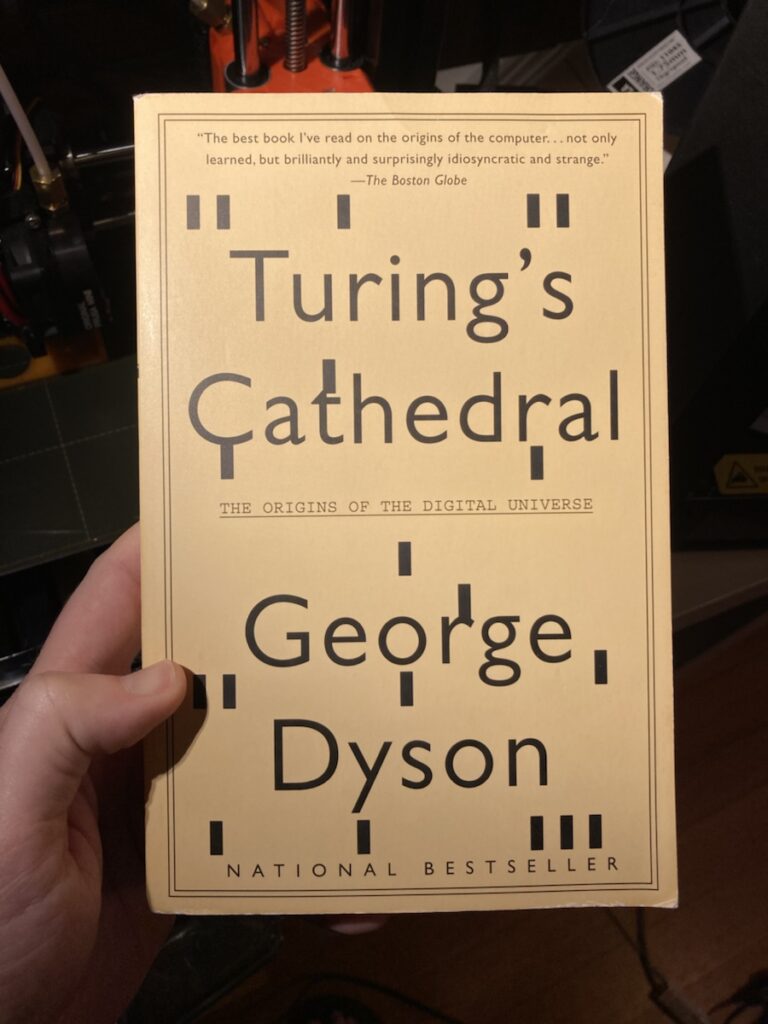If you’re interested in the early history of computing, check out Turing’s Cathedral by George Dyson. It covers an interesting middle phase between the original electronic digital computers and the wide commercialization of computers in the late 50s.

Specifically it examines the people and development around “the IAS machine” at the Institute for Advanced Study at Princeton. Big and not as big names make an appearance, and it is a detailed account of the forces at play: academia, industrial, military, and political.
The design of the “IAS machine” was the pattern for dozens of machines around the world. More than one country’s “first computer” was one built using the design developed by the people at IAS. I think of it as the first practical computer – the construction needed to solve a lot of problems that the original electronic computers didn’t need to address because they were just struggling to exist.

It’s been a while since I finished the book, but I do refer to it when I need details of how some design constraint was surmounted. It also includes enough biographical information that I use it to jog my memory of exactly who was who. The world of computing was still small enough that people who contributed to the IAR project show up in other places pretty often.
It’s widely available. It looks like Thriftbooks has it for under $5, so you could get it for free if you’ve got some reward points there.
